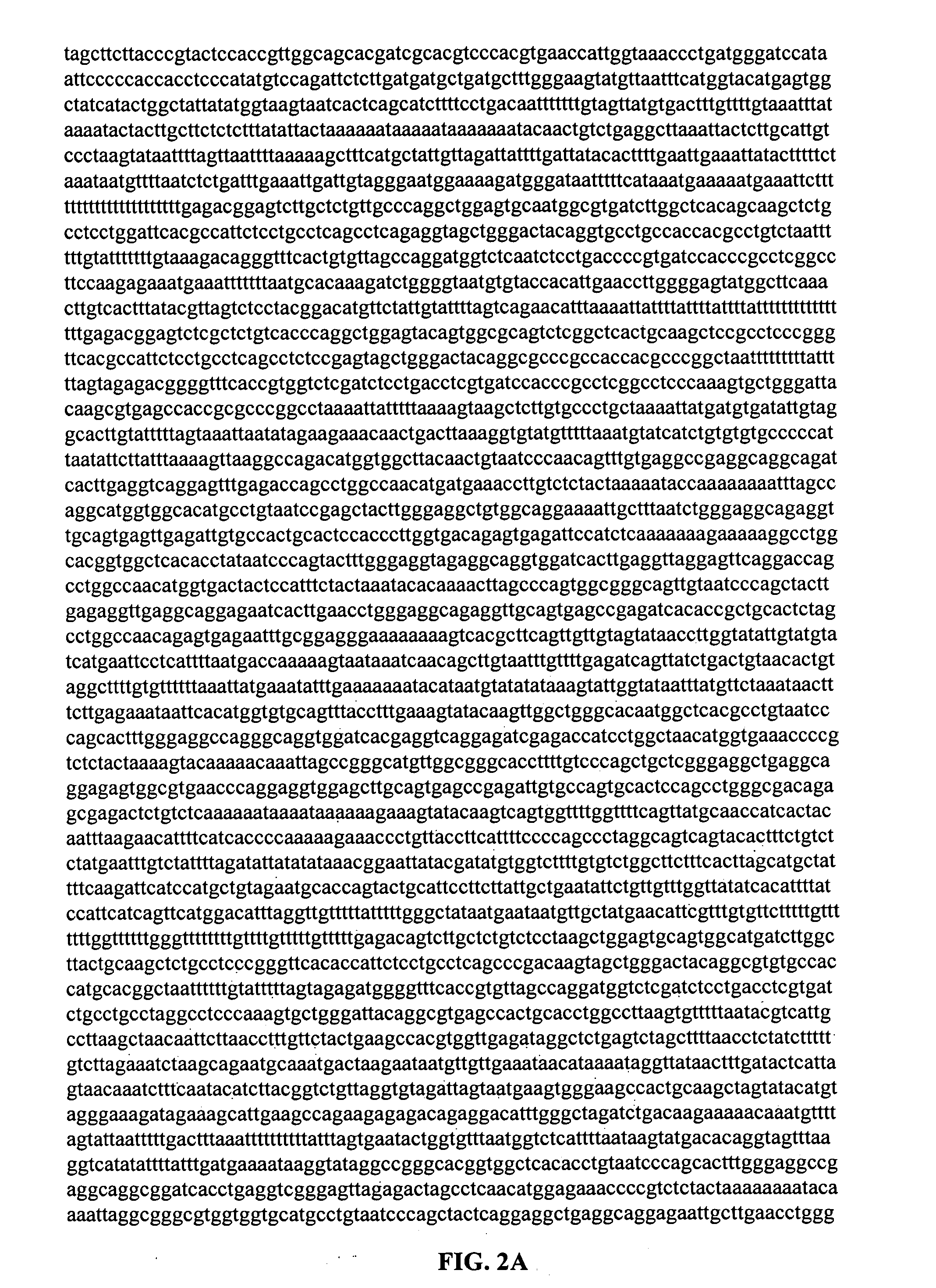Methods for treating viral infections
a technology for viral infections and treatment methods, applied in the field of viral infection treatment methods, can solve the problems of ribosome pause and affect the efficiency of programmed ribosomal frameshifting, and achieve the effects of modulating and affecting the efficiency of programmed ribosomal frameshifting
- Summary
- Abstract
- Description
- Claims
- Application Information
AI Technical Summary
Benefits of technology
Problems solved by technology
Method used
Image
Examples
examples
Cryptic Splice Site
[0428]This example demonstrates that a cryptic splice site is created when a guanine residue is inserted after nucleotide 48 of exon 7 of SMN in a minigene construct comprising in 5′ to 3′ order: (i) the nucleic acid residues of exon 6 of SMN, the nucleic acid residues of intron 6 of SMN, the nucleic acid residues of exon 7 of SMN, the nucleic acid residues of intron 7 of SMN, the first 23 nucleic acid residues of exon 8 of SMN; and (ii) a reporter gene coding sequence fused in frame to the nucleic acid residues of exon 8 of SMN, wherein the reporter gene does not have a start codon. As a result of the cryptic splice site, a deletion of the last seven nucleotides of exon 7 occurs and a frameshift in the open reading frame of the reporter gene is created.
Materials and Methods
Preparation of the Minigene Constructs
[0429]DNA corresponding to a region of the SMN2 gene starting from the 5′ end of exon 6 (ATAATTCCCCC) (SEQ ID NO: 1) and ending at nucleic acid residue 23 ...
PUM
| Property | Measurement | Unit |
|---|---|---|
| time | aaaaa | aaaaa |
| time | aaaaa | aaaaa |
| time | aaaaa | aaaaa |
Abstract
Description
Claims
Application Information
 Login to View More
Login to View More - R&D
- Intellectual Property
- Life Sciences
- Materials
- Tech Scout
- Unparalleled Data Quality
- Higher Quality Content
- 60% Fewer Hallucinations
Browse by: Latest US Patents, China's latest patents, Technical Efficacy Thesaurus, Application Domain, Technology Topic, Popular Technical Reports.
© 2025 PatSnap. All rights reserved.Legal|Privacy policy|Modern Slavery Act Transparency Statement|Sitemap|About US| Contact US: help@patsnap.com



